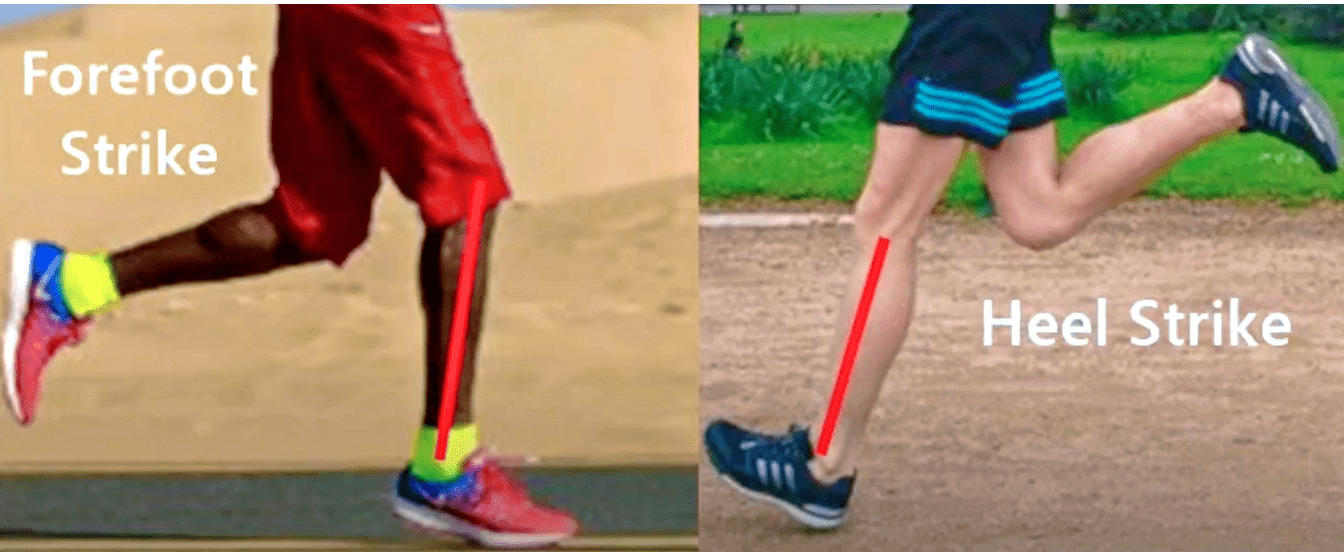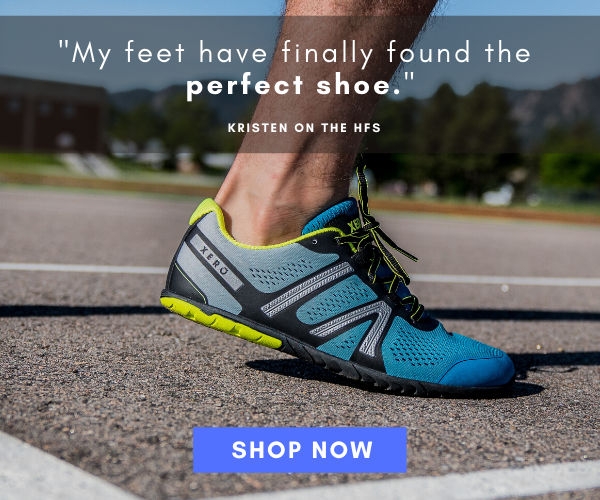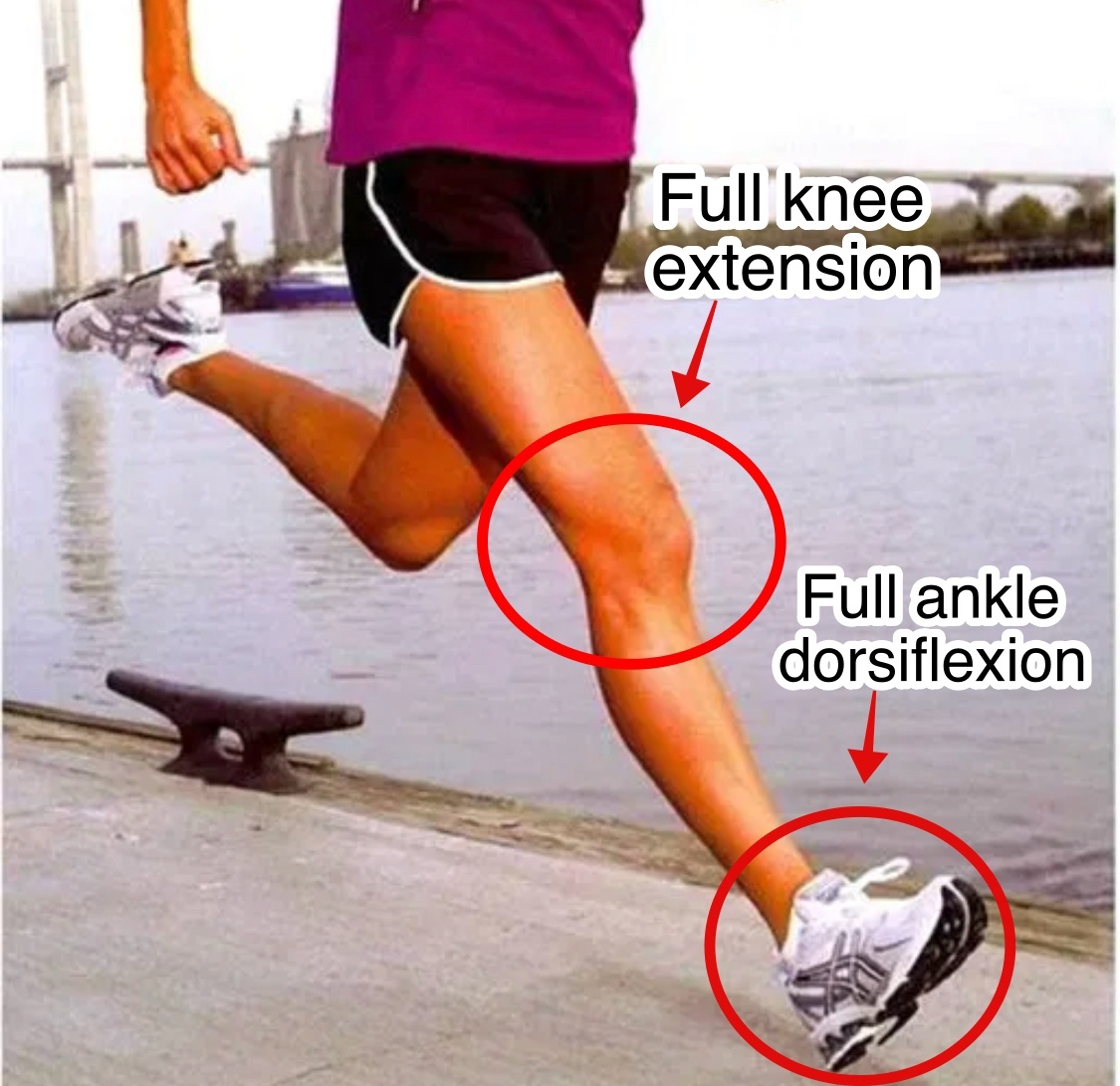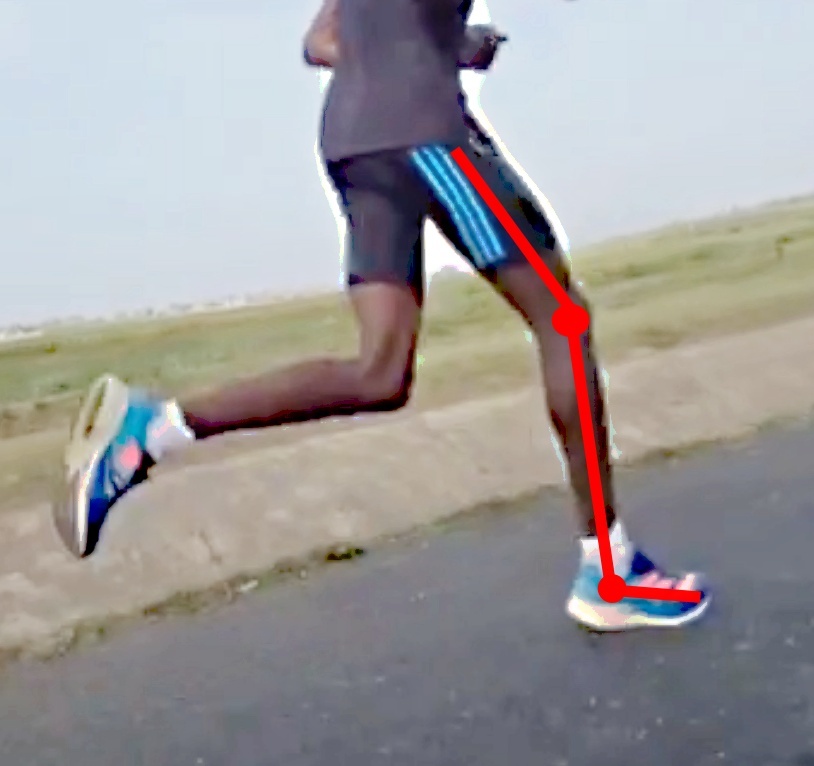In running, one aspect that has attracted a lot of attention is foot strike pattern whereby a growing body of work over the last few decades revealed a troublesome trend that landing with a heel strike is largely to blame for most injuries because the higher-than-normal impacts causes more damage to the shins, knees and the lower back than forefoot running.


What’s worse, the heel strike-related impacts are amplified if a heel strike is used when running uphill. One study found that ultra-marathoners who got injured sustained their injury because they had greater eccentric loading while running uphill, on their heels, which already places greater mechanical demands on the leg, especially on the knees, when running on even grounds.
The researchers found:
- When you heel strike when running up a hill, eccentric loading (muscle and tendon stretching) on the leg increases as the foot pushes the body up the hill.
- Similarly, the knee is less flexed (more stiff) and rapidly more extended at heel strike, which also further stretches the knee ligaments.
In line with this, a similar study in the British Journal of Sports Medicine found that runners who sustained a knee injury during an ultra-marathon ran with a smaller knee flexion range when running uphill vs running downhill, suggesting that the knee-joint was more extended than tolerable, and therefore, the muscles and tendons of the lower leg eccentrically stretched too much. This kind of eccentric activity, especially under the high impact nature of heel strike running, results in excessive loading on the leg, and combined with muscle fatigue, tendon inflammation arises. (Curwin and Stanish, 1984).
Another biomechanical factor that increases eccentric loading on the legs when heel strike running uphill is the repetition of forefoot lifting (ankle dorsiflexion, shown below) to allow initial ground-contact on the heel. This action is performed by the tendons in the ankle and shin, and was found to be a common cause of lower leg injury, particularly tendinitis of the foot dorsiflexors, patellar tendon and Achilles tendon (Fallon, 1993).


The Take Home Message
Any intervention aimed at preventing running-related injuries should include avoidance of heel striking, and adopting a forefoot strike because it has more influence on your entire mechanics as previously expected. Most exciting, forefoot running has been found to be a literal cure for runners knee and chronic lower pain as well as back injury! Read more on that here!

References:
Curwin S, Stanish WD. Tendinitis: its aetiology and treatment. Lexington: Collamore Press,1984:25-8.
Fallon, KE. Musculoskeletal injuries in the ultramarathon: the 1990 Westfield Sydney to Melbourne run. Br J Sports Med, 1996;30:319-323

If you’d like, you can support Run Forefoot and help keep it going by making a donation in any amount of your choosing:

Or, you can support Run Forefoot by shopping at the BEST Barefoot Shoe Brands, and be sure to bookmark these links 🙂
Lonowear: https://lonowear.com/?ref=cedsholh
Saguaro: https://www.saguaro.com/?ref=9bVA8fEkmDvB-I
Vibram FiveFingers: https://www.anrdoezrs.net/click-7600968-11372648
Vivobarefoot: https://amzn.to/3vycQOY
Be Lenka: https://www.tkqlhce.com/click-7600968-13947200
Xero Shoes: https://xeroshoes.com/go/Run_Forefoot
Iguaneye: https://www.iguaneye.com/?ref=8tfXVc92
Soft Star Shoes: https://shrsl.com/3mp1b
Wilding Shoes: https://bit.ly/3lIygQP
Bretta Riches
BSc Neurobiology; MSc Biomechanics candidate, ultra minimalist runner & founder of RunForefoot. I was a heel striker, always injured. I was inspired by the great Tirunesh Dibaba to try forefoot running. Now, I'm injury free. This is why I launched Run Forefoot, to advocate the health & performance benefits of forefoot running and to raise awareness on the dangers of heel striking, because the world needs to know.
Latest posts by Bretta Riches (see all)
- Can You Run In Barefoot Shoes? Yes, But DON’T Heel Strike! - 21/07/2024
- Why Cushioned Running Shoes Are Really Bad for Your Feet - 19/07/2024
- Do Cushioned Running Shoes Cause Injuries? - 17/07/2024
